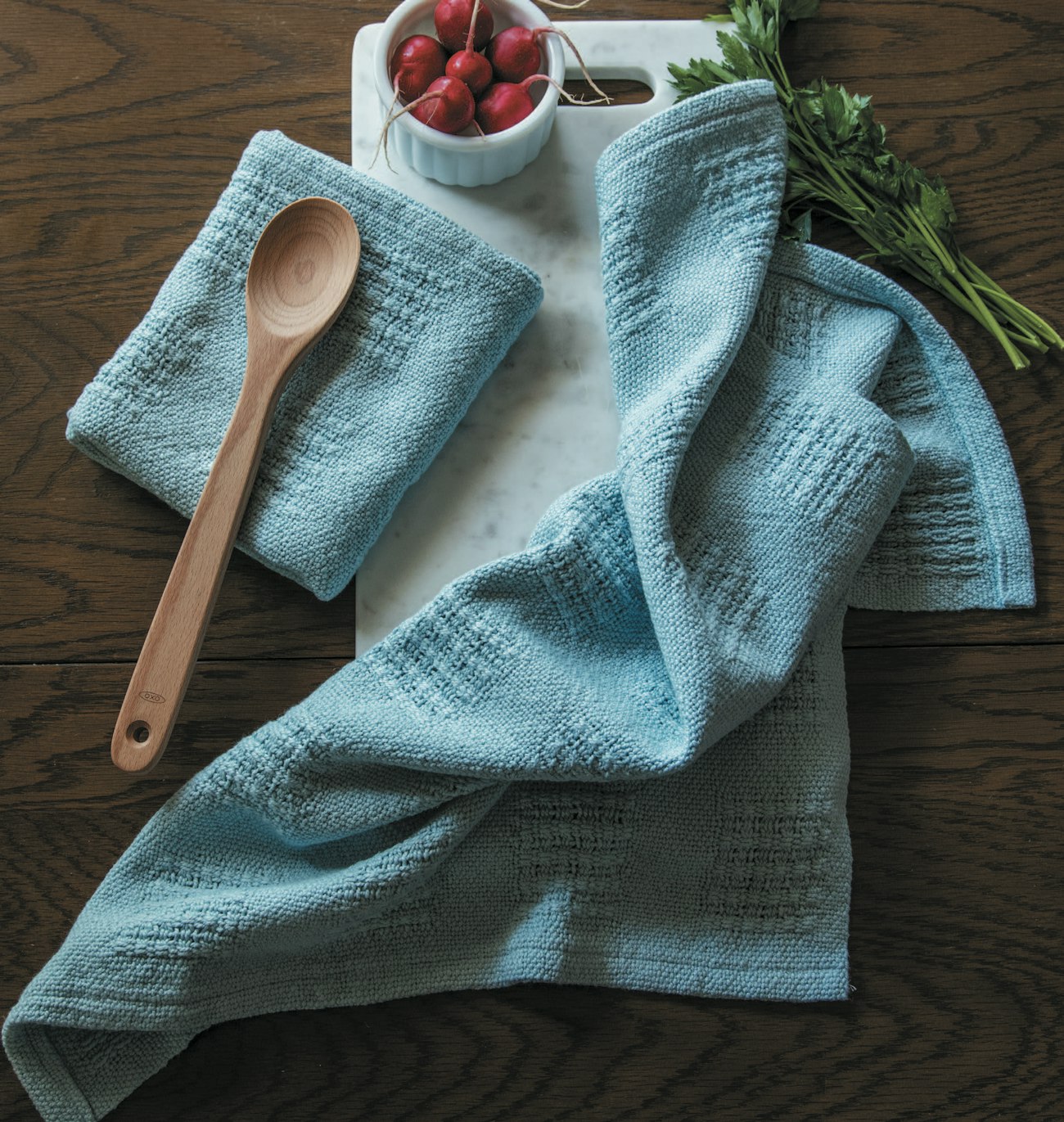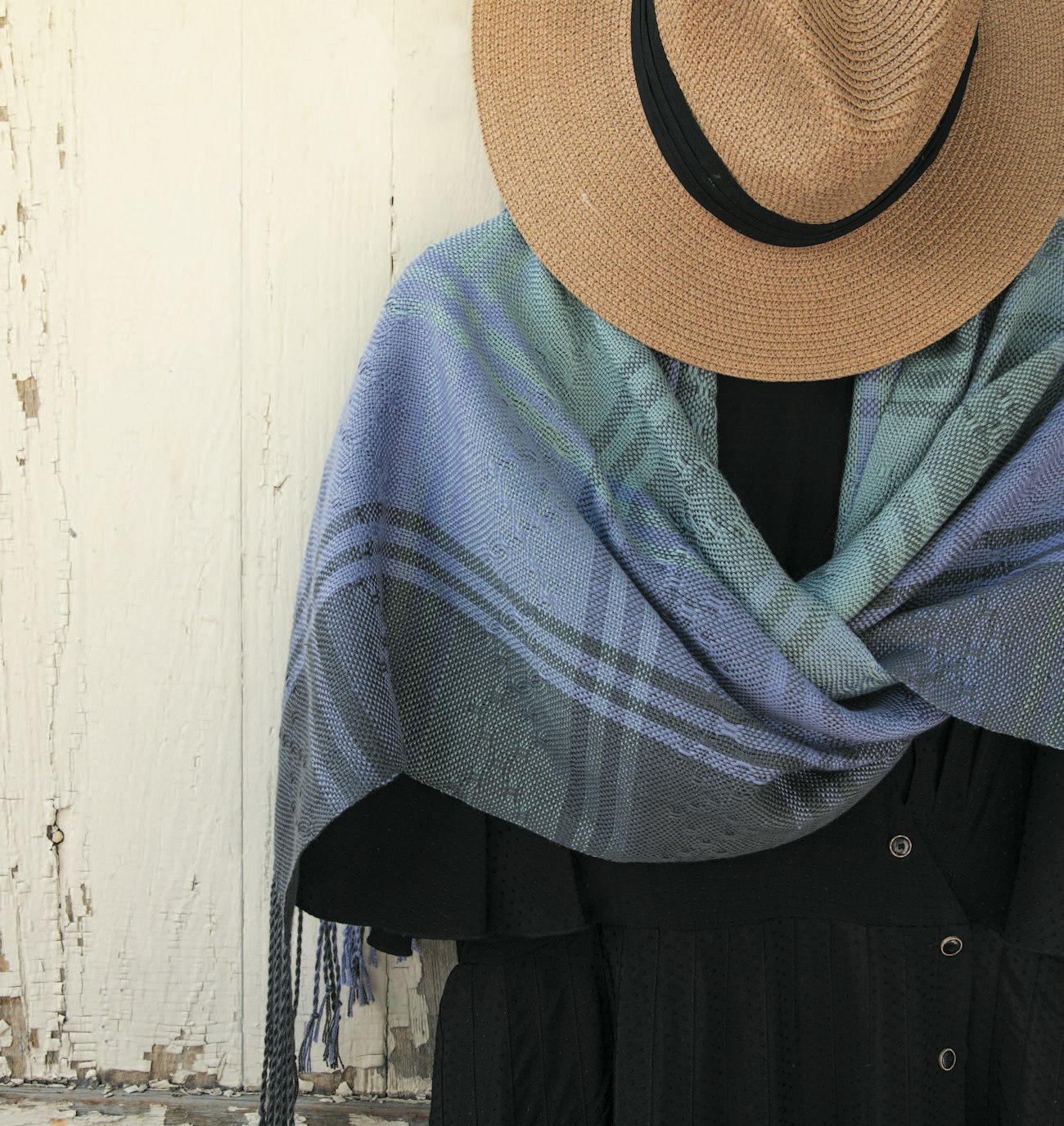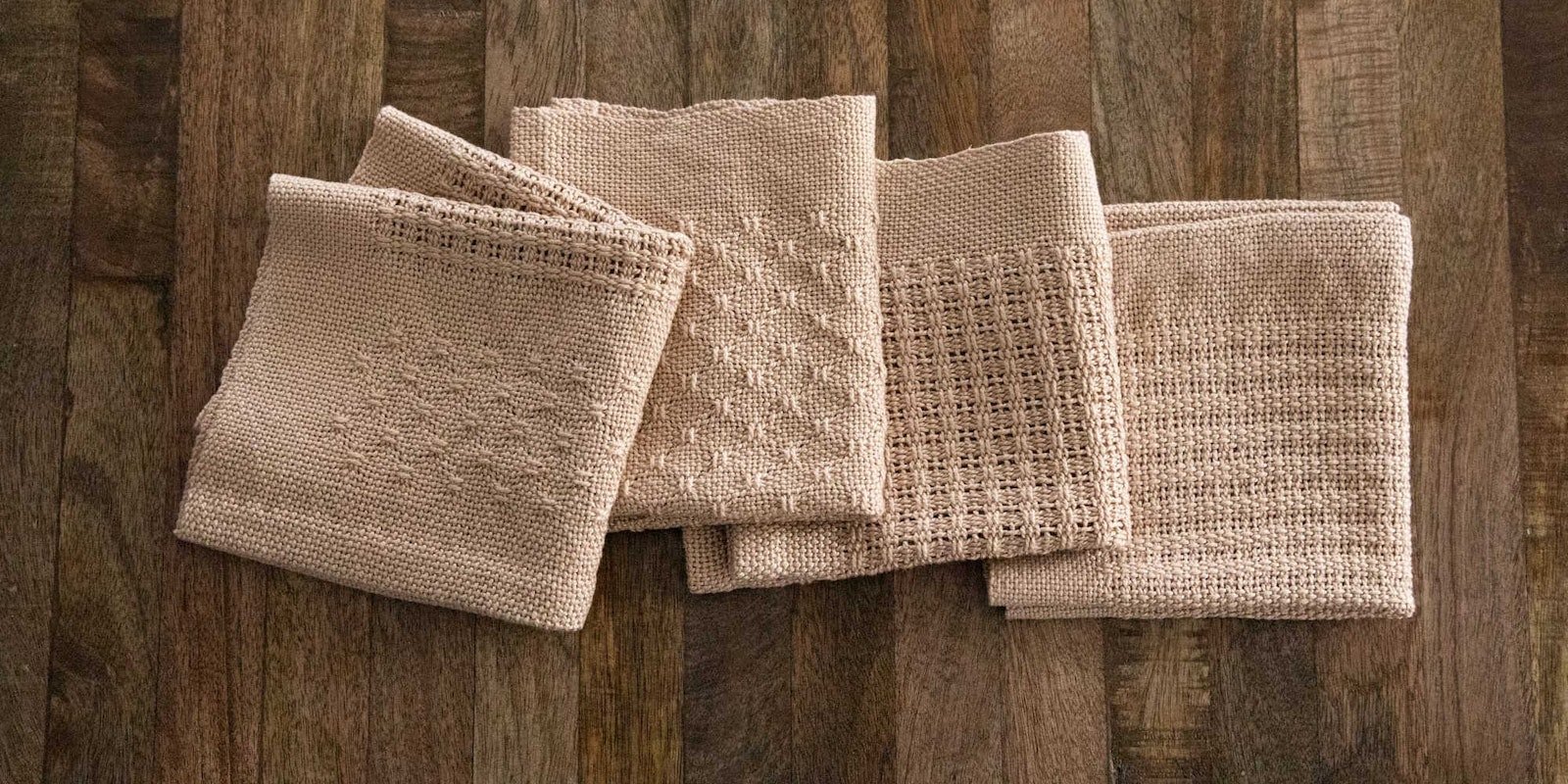When we talk about choosing yarns for projects, we often start by saying “think about how the project will be used and choose the yarn that fits.” So, a scarf you want to keep you warm on a snowy day might be best made from cozy wool while a thirsty cotton would be a good choice for dish towels. Another consideration you need to make, though, is what sort of structure or technique you’re using, especially if you’re planning to weave lace.
Lace by its very nature is an open weave with long floats in the lacy areas. One of the benefits of weaving lace on the rigid-heddle loom is that through strategic pick-up you can have areas of lace just about anywhere on your cloth and can change and move where the lace appears as you weave. In the À La Carte Napkins by Sarah C. Bixler from her new video, Huck Lace on the Rigid-Heddle Loom (and also featured in the Fall 2022 issue of Easy Weaving with Little Looms), Sarah warps her loom once and weaves 4 lace napkins, all different, simply by changing the pick-up pattern.
 Tammy Bast's Misty Morning Towels project from the Spring 2025 issue features sweet areas of pick-up lace in 3/2 cotton. Photo credit: George Boe
Tammy Bast's Misty Morning Towels project from the Spring 2025 issue features sweet areas of pick-up lace in 3/2 cotton. Photo credit: George Boe
What does this have to do with yarn? Well, if you’re weaving pick-up lace on a rigid-heddle loom, your choice of yarn will affect your weaving experience as well as the aesthetics of your final product. The classic choices for this kind of lace are all plant fibers: cotton, linen, hemp, and blends that combine some or all of these three. These specific plant fibers are so popular because they exist in a sort of middle territory of texture when it comes to yarns. They are not slippery like silk or rayons such as Tencel or bamboo, and they aren’t sticky like some wools. They’re easy to pick up and manipulate.
The only caveat about using these fibers on your rigid-heddle loom would be if you've never woven with linen before to leave linen in the weft as it can be extremely difficult to tension in the warp, especially when dry. If you do weave with linen in the warp, make sure to find some way to keep it moist if you live in a dry climate. Spray bottles of water and humidifiers can help. Hemp can also be fiddly, but is easier to work with than linen.
 Shilpa Nagarkar’s Sutra Scarf, also from the Spring 2025 issue, is another beautiful example of pick-up lace, this time using Tencel. Photo credit: Matt Graves
Shilpa Nagarkar’s Sutra Scarf, also from the Spring 2025 issue, is another beautiful example of pick-up lace, this time using Tencel. Photo credit: Matt Graves
I am not saying, of course, that you cannot use silk or wool for lace; in fact, you can weave beautiful, lacy pieces with these fibers. You only need to consider the characteristics of these fibers before you start weaving so you’re prepared for any challenges. For wool especially you might try using a different lace technique such as Brooks bouquet which can benefit from the yarn's sticky nature.
Now, there are a few yarns I would say to avoid when weaving laces unless you sample first and know for sure the aesthetic you get is what you want. Wool yarns that easily full probably aren’t the best choice because the shrinkage after wet-finishing will close the lacey openings. Yarns with furry or hairy textures, such as mohair, or highly textured yarns will obscure or distort the lace. Personally, I’d go for yarns with minimal differentiation in texture because the main feature of any lace piece is the lace, and you want it to stand out front and center.
If you’re interested in weaving lace, but don’t know where to start when it comes to pick-up patterns, we’ve got your covered. Sarah C. Bixler’s previously mentioned video, Huck Lace on the Rigid-Heddle Loom, is an excellent resource for anyone who needs to watch somebody else demonstrate a weaving technique before they understand it. I'd also suggest picking up a copy of the Spring 2025 issue of Easy Weaving of Little Looms which is full of lace projects of all kinds, including the towels and scarf pictured above.
Happy Weaving!
Christina
Originally published 6/30/2022; revised 1/13/2025

